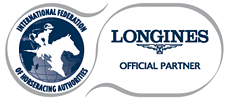AN INTRODUCTION: THE HISTORY OF THE PATTERN
THE CONCEPT
The Establishment of the Pattern
The concept of the Pattern originated in Britain in the mid-1960s, where the recommendation from a specially-appointed committee resulted in an important recommendation, which was to provide the rationale for the Pattern today:
“The Turf Authorities must ensure that a series of races over the right distances, and at the right time of the year, are available to test the best horses of all ages, and they must attempt to ensure that the horses remain in training long enough and race often enough to be tested properly for constitution and soundness.”
The implementation of this principle involved the provision of a comprehensive system of races, spread through the season and limited in number so that the best horses could not avoid meeting each other on every occasion.
The report made various detailed recommendations, but in general it proposed that the traditional system of Classic and other important races which had evolved in Britain during the previous two centuries should be preserved, but some modifications, additions and changes of emphasis were required to meet the needs of British racing in the second half of the twentieth century.
The Creation of the International Pattern
International racing within Europe was in a state of crisis at the end of the 1960s. At that time French prize money was so much higher than prize money in the other principal European racing countries that French owners complained that foreign-trained horses were plundering many of their important races in which penalties were determined by the monetary value of races previously won.
The French racing authorities were under strong pressure to restrict all their races, except those without monetary penalties (i.e. races of championship standard), to horses trained in France, which would have meant a severe setback to international racing which had been developing steadily since the end of the Second World War and was helping to increase public awareness of the attractions of thoroughbred racing.
The solution to this crisis was the creation of the European Pattern race system embracing France, Great Britain and Ireland (Germany and Italy joined later) which based penalties in important races not on the monetary value but on the quality of races previously won. The European Pattern was born in 1971.
THE GROUP RACE SYSTEM
The successful creation of the European Pattern depended on the application of internationally agreed judgements of quality for the principal races in all the participating countries. The process of evaluation led to the division of all the races within the Pattern into three Groups according to the following criteria:
Group 1
Classic and other races of championship standard having major international importance.
Group 2
The category of races immediately below championship standard, and also significant in an international context.
Group 3
The remainder of the races, including Classic Trials, required to complete the series of tests for the best horses. These are mainly of domestic importance in each of the member countries, but they attract runners from abroad from time to time.
Group 1 races are run without penalties on strict weight-for-age and sex terms, whilst penalties in Group 2 and 3 races are based on success in previous Pattern contests.
The Establishment of the European Pattern Committee
The European Pattern Committee (EPC) was set up by the member countries to regulate the European Pattern as a whole. It was given the responsibility for preventing mutually damaging clashes between Group 1 and Group 2 races in different countries, and for sanctioning the introduction of new Pattern races and major changes of date, conditions and Group of existing Pattern races. It meets annually in January by rotation in the various countries comprising the European Pattern, and ad hoc meetings are held from time to time to deal with specific issues.
The control of the committee is exercised within the framework of Ground Rules agreed by the member countries. The Ground Rules enact that every race in the European Pattern must conform to the following:
• It should have no indigenous conditions, i.e. not be restricted to horses bred or trained in the country concerned
• It must have a permanent element in the title (e.g. the Derby), to which a prefix or suffix may be attached
• It must justify its Group by the quality of its runners, assessed primarily by the ratings of the first four horses, over a rolling three year period, and should meet the rating parameters set for that Group
• If a Group 1 race, it must be run with no penalties or allowances other than a sex allowance
• Geldings may be eligible for all Pattern races except those Group 1 races confined to three-year-olds or two-year-olds.
The Ground Rules also include definitions of changes within the European Pattern and regulations for the upgrading and downgrading of Pattern races.
Various reviews were conducted over the years which exposed many anomalies. In some EPC member countries there were wide variations in the quality of races included in each Group, and the average rating of races in each Group was well below the standards of the corresponding Groups in the leading countries, notably France and Britain. This situation was clearly unsatisfactory since the purpose of the Group system was to establish a fair means of assessing penalties internationally, and for assessing the quality of horses and races.
The completion of the reviews led to some radical changes in the Pattern race systems of some countries, and the number of Italian Pattern races was reduced drastically. Nevertheless, the goal of common Pattern race criteria throughout the member countries proved unattainable in the 1980s, and the most that could be achieved at that time was publication by each country of the criteria for its own Group and a commitment to adhere to them.
In 1992, a further significant step in the evolution of the European Pattern was taken when it was agreed that common rating criteria for all European Pattern races should at last be introduced. A slight lowering of the criteria in France and Britain and a comparable raising of criteria in the other member countries provided the necessary means of rationalisation, though adjustment was to be gradual and not revolutionary. Races failing to meet the criteria were to be made liable to formal review by EPC and, where appropriate, the subject of downgrading. At the same time it was agreed that races in European countries outside the ‘Five’ should be eligible for European Pattern race status if they could achieve the appropriate rating criteria.
Listed Races
The racing programme has become ever more sophisticated since the foundation of the Pattern, reflecting the mounting level of investment in racing and breeding, and the complexity of a vast international business. The racing programme, breeding industry and the bloodstock markets are interdependent, and success or failure in important races has a decisive impact on breeding values and the bloodstock market. The three Groups of the Pattern proved inadequate for the identification of all the racehorses of superior merit, and a fourth stratum of quality immediately below the Pattern, namely ‘Listed races’, soon gained increasing importance.
Listed races originated in the requirement of breeders and bloodstock sales companies for a means of identifying races below Pattern standard that were contested regularly by horses meriting the distinction of black type, signifying quality of performance, in sales catalogues. The advantages led to their adoption in all principal racing and breeding countries across the world.
For a long time Listed races were subject only to a loose form of regulation agreed by the various national racing authorities, the breeders associations and the International Cataloguing Standards Committee representing the leading bloodstock sales companies. However, this method of control lacked structure and resulted, for many years, in a wide disparity in the quality and quantity of Listed races in different countries. Regulation of British Listed races was assumed by the Flat Race Pattern Committee in 1986. A move towards regulated control of Listed races across the EPC countries in more recent history resulted in Listed races being fully consumed within the EPC Ground Rules by 2015 and therefore being subject to consistent, regulated quality control. As a result, the number of underperforming or weak Listed races across Europe was reduced.
WORLD-WIDE ADOPTION OF THE PATTERN AND LISTED RACE SYSTEM
The universally recognised benefits of the Pattern race system have led to its adoption in practically all countries in which thoroughbred racing takes place. However low the standard may be, every country finds it appropriate to designate the races which are habitually contested by the best horses available, carry most prize money and confer most prestige on the winners. In many countries these races are called ‘Graded races’, although they are often divided into three Grades to correspond with the Groups of the European Pattern.
The disparities in racing standards have thus far precluded the integration of all those races in a unified world Pattern. However, there is hope that, over time, more formally structured and consistent assessment criteria and quality control measures may be adopted around the rest of the world. Some noticeable progress has been made in this regard latterly and should hopefully continue, through the appropriate international committees.
THE EUROPEAN PATTERN TODAY
The modus operandi remains as it ever was – i.e. to ensure the provision of a co-ordinated programme of quality races across Europe; countries working together rather than against each other. Consistent methods of quality control are assured, thus resulting in a collective responsibility that sees the value of European Black Type being protected.
Racing has of course changed a great deal during the life of the Pattern. Its international aspect has become much more pronounced, and national programmes are highlighted by super-races and super-racing festivals which transcend frontiers. Europe has undoubtedly led the way on nurturing a balanced Pattern programme and appropriate qualitative measures, with other racing jurisdictions around the world recognising that Europe sets the high watermark for quality control of its Pattern system. There are of course many benefits of being part of an international community, which obviously include maintaining a co-ordinated, balanced, regulated and interdependent approach to providing a programme of opportunities for the best horses. The operation of a Pattern race system devised on these lines is bound to help identify the best horses, and these are the horses which will be most highly prized for subsequent breeding purposes.
There are many historical examples, right from its outset, where the EPC has exerted decisive influence on the orderly expansion of international racing; decisions which have left a resounding historic imprint. It is often acknowledged that those with commercial and racecourse interests have, at times, a propensity to look at a specific situation in isolation, whereas it should be the task of any Pattern Committee to view the wider picture and any long-term impact on the sport and the breed. There is no doubt that being restrained by Pattern Race Ground Rules can prove frustrating for individual countries. Being a member of the EPC calls for a shared responsibility for international racing which admittedly may not always sit with the interests of individual nation’s domestic sports. Although the respective turf authorities in all the countries of the European Pattern may, therefore, sometimes feel constrained by the ideals of the Pattern, there is a real need for constant commitment to its preservation if it is to continue to perform the essential role assigned to it.
Though the European Pattern is in one sense a symbol of international co-operation, of course it must not extinguish the entrepreneurial flair of racing promoters in individual countries. Extinction of that flair would not be desirable because the spirit of competition is a spur to the improvement of racing standards everywhere. For all these reasons the Pattern is under constant stress.
Although the Pattern is intended to be of permanent value, giving the best horses of successive thoroughbred generations the right opportunities to race competitively and internationally, it is not set in stone. The EPC on many occasions has demonstrated its scope for continuous development and improvement, together with strategic vision. The Pattern is a living entity and, if it is to continue to fulfil its original purpose, it must of course be adaptable and responsive to changes in horseracing as a whole.



